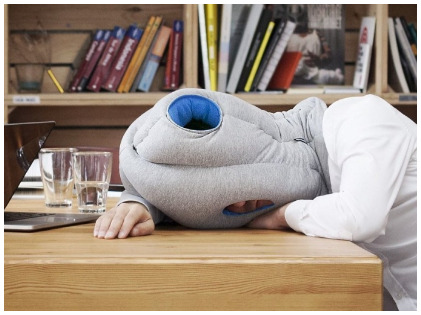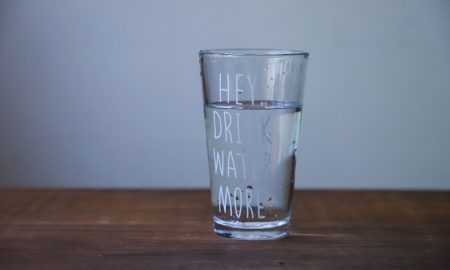
Want to Be More Productive? Take a Nap!

Almost 85% of the earth’s mammals are polyphasic, meaning they sleep several times throughout the day. In contrast, humans are what is termed monophasic, meaning we only sleep once in a day. But owing to modern ways of living and rising stress levels, it is not uncommon to find sleep-deprived people (or be one yourself). Power naps are one tool that can go a long way in helping you work at your maximum, even if you are sleep deprived.
What is a Power Nap?
 A power nap is basically a nap during the middle of the day that lasts about 15 to 30 minutes. This power nap is effective at offsetting the negative effects of sleep deprivation ad greatly reduces stress levels. It was coined by a man by the name of James Mass, who is a social psychologist working at Cornell University. A power nap has the effect of revitalizing and recharging you in a very short space of time.
A power nap is basically a nap during the middle of the day that lasts about 15 to 30 minutes. This power nap is effective at offsetting the negative effects of sleep deprivation ad greatly reduces stress levels. It was coined by a man by the name of James Mass, who is a social psychologist working at Cornell University. A power nap has the effect of revitalizing and recharging you in a very short space of time.
Types of Power Naps
Power naps come in four varieties. The first is planned napping, which is simply a nap you have planned for in advance. An example is taking a nap in the afternoon to prepare for a long night of work in the office. Next, we have emergency napping, which is when you have to nap because you are so tired that you cannot function nor focus on your daily agenda. A good example of emergency napping is if you have to pull over to the side of the road when traveling for a few minutes of shuteye. Next is habitual napping, when you have a set slot of the day in which you nap and it has become a habit. Lastly is appetitive napping, which is a casual nap simply for the fun of napping.
Time Matters
 The length of the nap you take does matter. A very short nap of just six minutes has benefits different from the benefits of a 90-minute nap. People can choose from a range of naps to fit their needs. A six-minute nap is best for improving declarative memory, which is a kind of long-term memory used for recalling knowledge and facts. So if you are cramming notes for some reason (for a class or for a presentation at work), a 6-minute power nap can help. A 15 to 20-minute nap is best for improving motor performance and helping you be more alert. They also stave off sleepiness and boosts your brainpower. Naps between 60 and 90 minutes are best for enhancing your creativity, as brain connections are revitalized in REM sleep during naps of this duration.
The length of the nap you take does matter. A very short nap of just six minutes has benefits different from the benefits of a 90-minute nap. People can choose from a range of naps to fit their needs. A six-minute nap is best for improving declarative memory, which is a kind of long-term memory used for recalling knowledge and facts. So if you are cramming notes for some reason (for a class or for a presentation at work), a 6-minute power nap can help. A 15 to 20-minute nap is best for improving motor performance and helping you be more alert. They also stave off sleepiness and boosts your brainpower. Naps between 60 and 90 minutes are best for enhancing your creativity, as brain connections are revitalized in REM sleep during naps of this duration.
How to Nap
 Since a power nap’s purpose is to energize you in a short amount of time, you need to fall asleep as fast as possible and this requires shutting out distractions. Have your devices in silent mode so that your nap is not disturbed by beeping or ringing. Set an alarm for the length of time you wish your nap to be so that you don’t get groggy. If possible, nap in an area or room where the lights are dimmed or use an eye mask. If necessary, wear a noise-reduction headset or plug in your earphones and listen to soothing music. Be prepared with a small shawl or blanket as body temperature tends to drop with quick naps. It may seem contradictory, but have a cup of coffee before your nap as it will help you be more productive when you wake. Most importantly, get up quickly and get back to work! Consider splashing your face with cold water or sipping on some chilled beverage. Alternatively, wake up to a brisk 5-minute walk. Where possible, try to be consistent with your nap schedule.
Since a power nap’s purpose is to energize you in a short amount of time, you need to fall asleep as fast as possible and this requires shutting out distractions. Have your devices in silent mode so that your nap is not disturbed by beeping or ringing. Set an alarm for the length of time you wish your nap to be so that you don’t get groggy. If possible, nap in an area or room where the lights are dimmed or use an eye mask. If necessary, wear a noise-reduction headset or plug in your earphones and listen to soothing music. Be prepared with a small shawl or blanket as body temperature tends to drop with quick naps. It may seem contradictory, but have a cup of coffee before your nap as it will help you be more productive when you wake. Most importantly, get up quickly and get back to work! Consider splashing your face with cold water or sipping on some chilled beverage. Alternatively, wake up to a brisk 5-minute walk. Where possible, try to be consistent with your nap schedule.
Not enough importance is placed on a good night of sleep and few people realize how essential sleep is for our bodies to function optimally. Getting adequate rest is important for your immune system, your brain and even for maintaining a healthy weight. Make sure that if your sleep schedule is disturbed for any reason, you remedy it as far as you can by making use of power naps. Power naps are called so because they are powerful! Start incorporating them into your day today and you will not regret it!
More in Relaxation
-
`
Jennifer Aniston’s Timeless Tips for Health and Youthfulness
Iconic Hollywood actress Jennifer Aniston has long been admired for her acting prowess and seemingly ageless beauty and vitality. Now in...
November 22, 2023 -
`
Unleash Your Entrepreneurial Drive: 5 Strategies for Self-Motivation
5. Have an Undying Passion Passion is the driving force behind the world’s most successful entrepreneurs. Self-motivation becomes second nature when...
November 19, 2023 -
`
How to Go Vegan – The Right Way!
The vegan lifestyle has seen a significant surge in popularity lately, and rightly so. Embracing veganism not only fosters personal health...
November 12, 2023 -
`
7 Eye-Opening Reasons to Drink More Water
Water is frequently hailed as the quintessential elixir for life, and rightfully so. Constituting approximately 60% of our total body weight,...
November 1, 2023 -
`
Drake’s Workout Regimen: How the Canadian Rapper Stays Fit
The lights dim, the stage is set, and the crowd’s anticipation is palpable. When the beat drops, there is one Canadian...
October 24, 2023 -
`
Why Six-Figure Family Holidays Are Becoming the New Normal
In the panoramic landscape of the modern travel scene, a particularly glittering trend is emerging, akin to finding a diamond the...
October 21, 2023 -
`
Foods With High Water Content
Water is the elixir of life, and staying adequately hydrated is crucial for maintaining our health and well-being. While sipping on...
October 15, 2023 -
`
The Impact of Wearable Technologies in Health Research
In recent years, wearable technologies have emerged as a powerful tool in health research, revolutionizing how we collect and analyze data...
October 3, 2023 -
`
How Celebrities Stay Fit? Secrets of Chris Pratt, Jennifer Lopez & More
The glitz and glamor of Hollywood may make it seem impossible for celebrities to maintain an enviable physique. But it is...
September 29, 2023















You must be logged in to post a comment Login